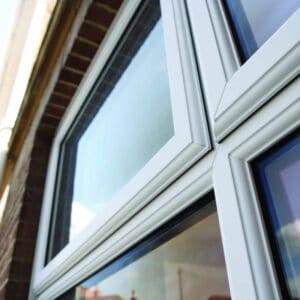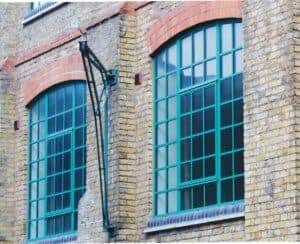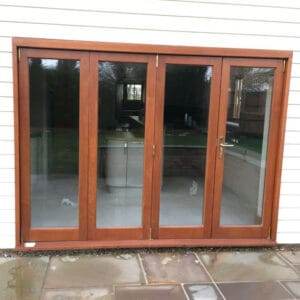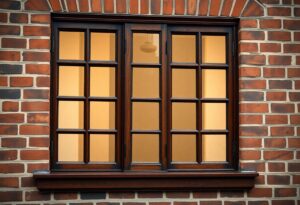You must understand the significance of wind load resistance and its impact on architectural integrity. In this blog post, we research into the importance of structural testing to ensure that R2 systems can withstand the forces of nature. By exploring state-of-the-art methodologies, we’ll highlight how testing validates the strength and durability of these systems, ultimately safeguarding your structures from potentially devastating wind effects. Equip yourself with the knowledge to make informed decisions about R2 systems and enhance your appreciation for robust engineering practices.
Understanding Wind Load
While many may overlook it, understanding wind load is important for ensuring the safety and stability of structures. Wind load refers to the forces exerted by wind on buildings and other structures, impacting their design and ability to withstand environmental pressures. This aspect becomes increasingly significant in areas prone to severe weather, where inadequate consideration can lead to structural failure or damage.
Definition and Importance
At its core, wind load is defined as the external pressure and suction forces applied to a structure due to wind. Its importance cannot be overstated, as proper assessment and consideration of wind loads are vital to achieving structural integrity and occupant safety. Ultimately, understanding wind load allows engineers to design buildings that can endure dynamic environmental conditions.
Factors Influencing Wind Load
Load factors impacting wind load include:
- Building height
- Geographical location
- Surface roughness
- Structural shape
- Wind speed
Understanding these factors enables you to better grasp how design choices may enhance or compromise your structure’s safety during severe wind events. Recognising their significance can enhance your design strategy and decision-making.
Understanding wind load involves considering various environmental and geometric aspects. Each element can significantly affect how wind forces interact with your structure, from elevation to surrounding topography. Building codes often dictate specific requirements based on these variables, ensuring that engineering designs anticipate the worst-case scenarios. Engaging with the relevant data can often lead to improved resilience of your structures in the face of unpredictable weather patterns. Recognising the interplay of these factors in your structural planning is important for fostering robust designs.
Structural Testing Methods
Clearly, understanding the various structural testing methods is important for validating the strength of R2 systems. These methods not only assess wind load resistance but also ensure compliance with safety regulations and durability requirements. By employing a combination of laboratory and field testing, you can gain a comprehensive picture of your system’s performance under actual wind conditions.
Laboratory Testing Protocols
Before initiating any testing, you should establish laboratory protocols that follow recognised standards. These protocols should outline the methods for simulating wind loads and measuring the structural response of R2 systems. Precision in testing equipment and data collection is imperative to derive valid conclusions about the system’s strength and resistance capabilities.
Field Testing Approaches
Any assessment of R2 systems is incomplete without robust field testing approaches. These in situ evaluations allow you to monitor real-world performance under varying environmental conditions, providing insights that laboratory tests alone may not reveal.
Another vital aspect of field testing approaches is the ability to observe genuine responses to dynamic wind forces as they occur in real-time. You should be particularly aware of potential structural weaknesses that may not be detectable in laboratory settings. By integrating advanced monitoring technologies, such as sensors and data analytics, you can gather comprehensive data on the structural integrity of R2 systems. This real-world validation is pivotal for ensuring that your systems can withstand the challenges posed by extreme weather conditions, ultimately safeguarding both performance and safety.
The R2 System Overview
Some innovative building systems have emerged to address the challenges posed by environmental factors like wind load. Among these, the R2 System stands out due to its unique approach to structural integrity and resilience. Designed to help ensure safety and reliability, this system integrates advanced engineering principles that meet modern construction demands.
Design Features
An important aspect of the R2 System is its design features, which enhance both stability and performance. With a focus on aerodynamic efficiency and robust load-bearing capabilities, the system incorporates innovative elements that significantly mitigate wind-induced stresses, thereby improving overall structural security.
Material Composition
System durability is underpinned by its high-quality material composition, utilising advanced composites and steel reinforcements. These materials are carefully selected to optimise performance under high-stress conditions.
Also, the choice of materials within the R2 System includes high-strength steel and advanced polymer composites, both of which contribute to its overall performance and longevity. The incorporation of these materials allows the system to maintain its structural integrity, even when faced with extreme weather conditions. By prioritising lightweight construction without compromising on strength, the R2 System effectively reduces potential vulnerabilities associated with wind loads, ensuring you can occupy these structures with confidence.
Wind Load Resistance in R2 Systems
All R2 systems are designed to withstand the forces exerted by wind loads, ensuring structural integrity and safety. Understanding wind load resistance is critical for optimising designs and achieving compliance with regulatory standards. As wind speeds increase, the potential for structural failure rises, making effective wind load resistance vital for the longevity and durability of your structures.
Design Specifications
At the core of R2 systems are design specifications that dictate how structures should endure wind loads. These specifications encompass material selection, structural geometry, and reinforcement methods, all tailored to anticipate potential wind stress. By adhering to these guidelines, you can enhance your system’s resilience and safeguard against unexpected weather events.
Performance Metrics
On evaluating the effectiveness of R2 systems, performance metrics come into play, assessing how well the design meets wind load resistance requirements. These metrics include factors such as deflection, stability, and overall strength, helping you to define the system’s performance under specific conditions.
Wind load performance metrics are vital for quantifying structural resilience. By examining deflection limits, you can ensure that your system does not exceed acceptable movement during high winds, which can lead to structural fatigue. Additionally, stability metrics help assess the likelihood of failure in extreme conditions, while strength evaluations provide insight into how well your R2 systems can resist potential deformation or collapse. Implementing comprehensive performance metrics allows for informed decision-making, ensuring your designs meet both safety and functional expectations.

Comparative Analysis
To evaluate the effectiveness of R2 systems against traditional structures, a thorough comparative analysis is important. This assessment examines various attributes such as wind load resistance, construction costs, and ease of assembly, providing a clear overview of both systems’ strengths and weaknesses.
| Attribute | R2 Systems |
|---|---|
| Wind Load Resistance | Higher due to innovative design |
| Construction Costs | More cost-effective in the long term |
| Assembly Time | Faster installation process |
R2 Systems vs. Traditional Structures
Between R2 systems and traditional structures, significant variances arise in how they perform under wind load conditions. R2 systems exhibit improved resistance due to their unique engineering, whereas traditional structures may falter during extreme weather, impacting their stability and longevity.
Case Studies
The effectiveness of R2 systems is further demonstrated through real-world case studies, which emphasise their performance in various conditions:
- Case Study 1: Residential building in Manchester – withstood 80 mph winds without damage.
- Case Study 2: Commercial structure in London – reduced construction time by 30% compared to traditional methods.
- Case Study 3: High-rise building in Birmingham – achieved 50% savings in energy costs during operation.
Studies have shown that these case studies provide compelling evidence of the effectiveness of R2 systems. For instance, in the Manchester study, the building not only resisted severe wind conditions but also showcased the strength of its materials. The London case revealed considerable time savings in assembly, enhancing project efficiency. Finally, the Birmingham building emphasised the potential for substantial energy cost reductions, showcasing R2 systems’ advantages over traditional approaches.

Implications for Engineering Practices
Keep in mind that the findings from wind load resistance and structural testing systems have significant implications for your engineering practices. By integrating robust testing methodologies, you can enhance the design integrity and safety of structures, ultimately ensuring compliance with industry standards and improving overall performance against extreme weather conditions.
Industry Standards and Regulations
Industry standards and regulations play a vital role in guiding you through the complexities of structural engineering. By adhering to these frameworks, you ensure that your designs not only meet safety criteria but also reflect best practices in wind load resistance, thereby protecting both lives and investments.
Future Research Directions
Industry advancements will shape the future of wind load resistance testing, encouraging innovative approaches in design techniques. This ongoing research will help you adapt to emerging challenges, enhancing materials and methodologies that withstand extreme environmental forces.
Directions for future research should focus on developing advanced materials that offer enhanced wind load resistance as well as refining modelling techniques to better simulate real-world conditions. Additionally, investigating dynamic performance characteristics of structures under varied load conditions will be crucial. By exploring these avenues, you can significantly improve safety and performance while also addressing the challenges posed by climate change and more extreme weather events.
Conclusion
To wrap up, understanding wind load resistance and the importance of structural testing enables you to validate the strength of R2 systems effectively. By exploring the methodologies and results of these tests, you can ensure that your designs not only meet the requisite standards but are also resilient against environmental forces. Implementing these insights will enhance your project outcomes and contribute to safer, more reliable structures in the long run.
FAQ
Q: What is wind load resistance, and why is it important for R2 systems?
A: Wind load resistance refers to the ability of a structure to withstand lateral forces exerted by wind. For R2 systems, which are often exposed to varying wind conditions, ensuring they can resist these forces is necessary for their stability and longevity. Validating wind load resistance helps in avoiding structural failures and ensures compliance with safety regulations.
Q: How is structural testing conducted to validate the strength of R2 systems?
A: Structural testing of R2 systems involves a series of evaluations that simulate real-world conditions. This can include wind tunnel testing, where scaled models are subjected to controlled wind speeds, and field tests, where full-scale systems are monitored under actual wind conditions. These tests help assess structural integrity and performance in various scenarios.
Q: What factors are considered when evaluating the wind load resistance of a structure?
A: Several factors are taken into account when assessing wind load resistance, including the structure’s height, shape, orientation, and the geographic location of the site. Additional considerations, such as local building codes, surrounding topography, and potential wind turbulence, also play a significant role in determining the appropriate design and materials for R2 systems.
Q: What standards and guidelines govern the wind load resistance testing for R2 systems?
A: Wind load resistance testing for R2 systems is governed by various national and international standards, such as the Eurocode 1 and the American Society of Civil Engineers (ASCE) standards. These guidelines provide methodologies for calculating wind loads and ensure structures are designed to withstand foreseeable wind events, promoting safety and resilience.
Q: How often should R2 systems undergo testing for wind load resistance?
A: The frequency of wind load resistance testing for R2 systems can vary based on several factors, including the age of the structure, any modifications made, and changes in environmental conditions. Generally, it is advisable to perform comprehensive testing every few years or after significant weather events to ensure ongoing structural integrity and compliance with current building codes.













